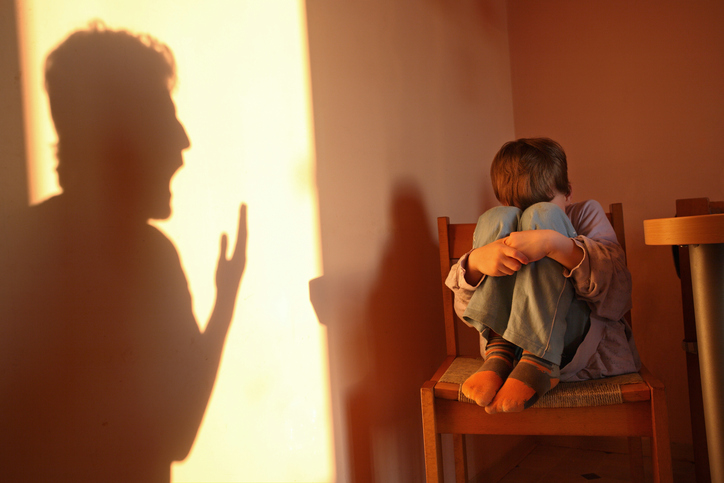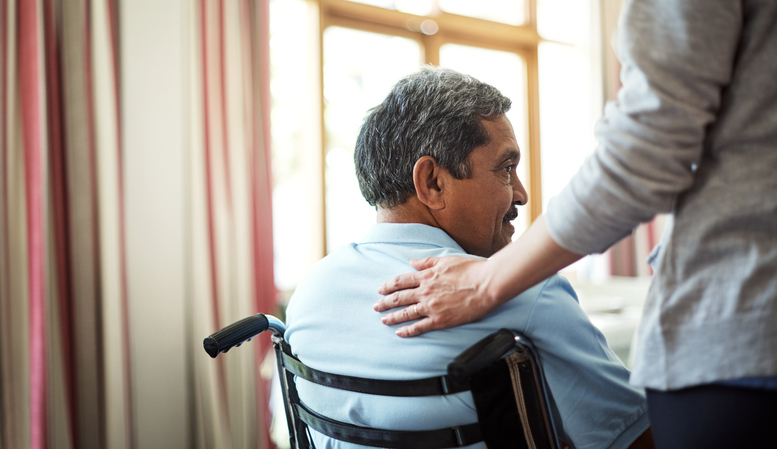 Emotional abuse is a form of manipulation used to maintain control in a relationship. This type of abuse may include verbal attacks, humiliation, intimidation, bullying, and isolation. It can cause deep emotional harm that may last for years.
Emotional abuse is a form of manipulation used to maintain control in a relationship. This type of abuse may include verbal attacks, humiliation, intimidation, bullying, and isolation. It can cause deep emotional harm that may last for years.
- Understanding Emotional Abuse
- Emotional Abuse and Intimate Relationships
- Emotional Abuse and Children
- Emotional Abuse and Disability
- Conditions Associated with Emotional Abuse
Understanding Emotional Abuse
Abuse is often defined as threatening behavior designed to subjugate another human being. Emotional abuse uses negative feelings like fear, guilt, and shame to control a person. Common tactics include insults, threats, coercion, and criticism. Another common technique is gaslighting, in which one person convinces the other to doubt their own memories. Emotional abuse can overlap with physical and sexual abuse, or it can appear on its own.
In some relationships, partners might emotionally abuse each other. In other relationships, the abuse goes one way. Abuse may wax and wane, being more frequent or intense at some times and less intense during other periods.
Emotional abuse can be difficult to identify if it is not blatant. Some people excuse their abuser’s behavior, blaming it on a bad mood. Since emotional abuse often causes low self-esteem, the person may think they deserve their poor treatment. If someone experiences gaslighting, they may even believe they imagined the abuse.
A person's behavior may fall into the category of emotional abuse when:
- The behavior does not stop or even pause when the recipient begins crying or asks for time to cool down. In fact, abuse may escalate as the recipient of the abuse becomes more vulnerable and upset.
- The behavior is frequent, occurring several times a month or more.
- The person uses vulgar and demeaning language, or they make baseless accusations.
- “Arguments” are one-sided: one person does all the talking and never listens.
- The person threatens violence.
- The person does not apologize after engaging in abusive behavior.
- The person who is abusive will not recognize the validity of anything their victim says.
- Sexual abuse or physical abuse is also present.
It is important to note that behavior may be abusive even if none of these factors are recognized. However, if any of these factors are present on more than the rarest of occasions, emotional abuse may be taking place.
Emotional Abuse and Intimate Relationships
Surveillance is a common tactic in emotional abuse among intimate partners. Many abusers look through their partners’ emails and texts without their knowledge. In a 2014 study by NPR, 75% of domestic violence shelters helped individuals whose abusers eavesdropped on them using hidden mobile apps. Some people who abuse hide their surveillance, using it to make sure the partner is being loyal and compliant. Others use the surveillance as a gaslighting tool, taunting the victim with knowledge of private conversations with doctors and family members.
 Through surveillance and intimidation, one partner often becomes isolated from the community. A person committing abuse might spread rumors about the partner to ruin their reputation. Or they may forbid the partner from seeing certain people. The partner may comply with demands to “prove” their loyalty.
Through surveillance and intimidation, one partner often becomes isolated from the community. A person committing abuse might spread rumors about the partner to ruin their reputation. Or they may forbid the partner from seeing certain people. The partner may comply with demands to “prove” their loyalty.
If an abuser cannot use fear, they may weaponize affection instead. If a couple has children together, one person may guilt-trip their partner into staying “for the kids’ sake.” Other abusers might insincerely threaten suicide if their partner tries to leave. Often the recipient feels they must endure abuse to protect the people they love.
People who emotionally abuse others within LGBTQ+ relationships may use societal prejudice to gain more power. Some individuals may threaten to “out” a partner’s LGBTQ+ status to family members and employers. Others may try to isolate a partner from the LGBTQ+ community by questioning their identity. They may claim the partner isn’t truly homosexual because they had a straight relationship in the past, or that they aren’t feminine/masculine enough to “count” as transgender. Since LGBTQ+ individuals often have limited social support, they are vulnerable to such isolation.
Emotional Abuse and Children
Children are especially vulnerable to emotional abuse. Young children may not realize an adult’s abuse is unusual. They may feel responsible for their parents’ behavior: if only they were better children, then their parents might be more loving.
Some adults take advantage of a child’s inexperience to gain control. A caregiver may make demands that exceed a child’s developmental abilities. They might penalize normal childhood behavior such as play and curiosity. Denying a child affection and daily care can also count as emotional abuse.
Since emotional abuse leaves no physical marks, it can be difficult for outsiders to spot. Making matters worse, children are often conditioned to obey adults. Abusers can easily coerce them into silence. The child may also be loyal to the adult and stay silent out of affection.
However, abuse is not impossible to notice. If a child-adult pair consistently shows the following warning signs, emotional abuse may be a concern:
- The child does not act their age. They may act and talk in an unusually “adult” manner, or they may show immature habits such as bed-wetting and tantrums.
- The child lacks basic social skills and has trouble making friends.
- The child struggles to regulate their emotions. They may be aggressive to animals and other kids, or they could refuse to show emotion at all.
- The adult publicly belittles the child and encourages others to do the same.
- The adult’s punishments are severe and disproportionate to the offense.
- The adult always assumes the child is at fault, even when evidence points to the contrary.
It is important to note that any one of these signs does not prove emotional abuse is occurring. Some children are naturally mature or stoic. Stress may cause a parent to punish a child more harshly than normal. But if a child’s behavior has suddenly shifted, or the parent acts hostile on a regular basis, there may be cause for concern.
If you think a child is being abused, you can call your state’s Child Protective Services to investigate. You can also call the Childhelp National Child Abuse Hotline at 1-800-4-A-CHILD (1-800-422-4453).
Emotional Abuse and Disability
People with a disability can also be vulnerable to emotional abuse. They are often socially isolated due to their conditions. Some live in group homes and have limited access to outside help. If a person has an intellectual disability, they may struggle to report the abuse or to get people to believe them.
 Gaslighting is common in these situations. Some abusers may accuse the person of exaggerating their symptoms and provoking the abuse. Others pretend the behavior never happened and blame the person’s agitation on their disability.
Gaslighting is common in these situations. Some abusers may accuse the person of exaggerating their symptoms and provoking the abuse. Others pretend the behavior never happened and blame the person’s agitation on their disability.
Often a person’s caregiver and abuser are one and the same. These situations are especially risky, since the person with the disability may be dependent on their caregiver for basic needs. An abuser might hide assistive devices or cancel doctor visits if the victim isn’t obedient. They may also deny basic care such as bathing or cooking. A recipient of abuse might feel they have no choice but to endure maltreatment for their own survival.
Conditions Associated with Emotional Abuse
Emotional abuse often goes hand in hand with psychological distress. A person committing abuse and a recipient of abuse are both likely to experience mental health concerns.
A person who is emotionally abused often experiences mental health concerns. They may develop difficulties sleeping, eating and food issues, and substance abuse habits. Depression, anxiety, and obsessive-compulsive behaviors are also common. Someone may even engage in self-harm or have thoughts of suicide.
Narcissism, stress, substance abuse, depression, and anger management issues can all lead a person to become abusive. If someone experienced abuse as a child, they might model those behaviors in their own parenting. However, none of these factors guarantee a person will become abusive. Plenty of abuse survivors grow up to be supportive parents. Likewise, not all people who abuse others have mental health concerns or traumatic pasts.
Even if an abuser has a mental health condition, a diagnosis does not rid them of responsibility for their own actions. It is merely an explanation for why the behavior may be occurring. It is possible to seek therapy to treat abusive tendencies and behavior, but only if a person truly wants to change.
If you or a loved one is having an emergency, you can call 911 for help. The National Domestic Violence Hotline (1-800-799-7233) or the National Suicide Prevention Lifeline (1-800-273-8255) are also good resources for a crisis.
References:
- Abuse and exploitation of people with developmental disabilities. (n.d.) Disability Justice. Retrieved from http://www.thehotline.org/is-this-abuse/domestic-violence-disabilities
- Domestic violence & people with disabilities. (n.d.). The National Domestic Violence Hotline. Retrieved from http://www.thehotline.org/is-this-abuse/domestic-violence-disabilities
- Emotional abuse. (n.d.). Retrieved from http://www.americanhumane.org/children/stop-child-abuse/fact-sheets/emotional-abuse.html
- Emotional abuse: Signs, symptoms and effects. (n.d.). Retrieved from http://www.nspcc.org.uk/preventing-abuse/child-abuse-and-neglect/emotional-abuse/emotional-abuse-signs-symptoms-effects
- Fact sheet: Emotional child abuse (n.d.) Prevent Child Abuse America. Retrieved from http://www.preventchildabuse.org/images/docs/emotionalchildabuse.pdf
- LGBTQ relationship violence. (n.d.) The National Domestic Violence Hotline. Retrieved from http://www.thehotline.org/is-this-abuse/lgbt-abuse
- Shaw, J. (2005). Lacanian demand and the tactics of emotional abuse. Psychoanalysis, Culture & Society, 10(2), 186-196. doi:http://dx.doi.org/10.1057/palgrave.pcs.2100038
- Smartphones are used to stalk, control domestic abuse victims. (2014, September 15). NPR. Retrieved from https://www.npr.org/sections/alltechconsidered/2014/09/15/346149979/smartphones-are-used-to-stalk-control-domestic-abuse-victims
- Trust. (n.d.) The National Domestic Violence Hotline. Retrieved from http://www.thehotline.org/healthy-relationships/trust

